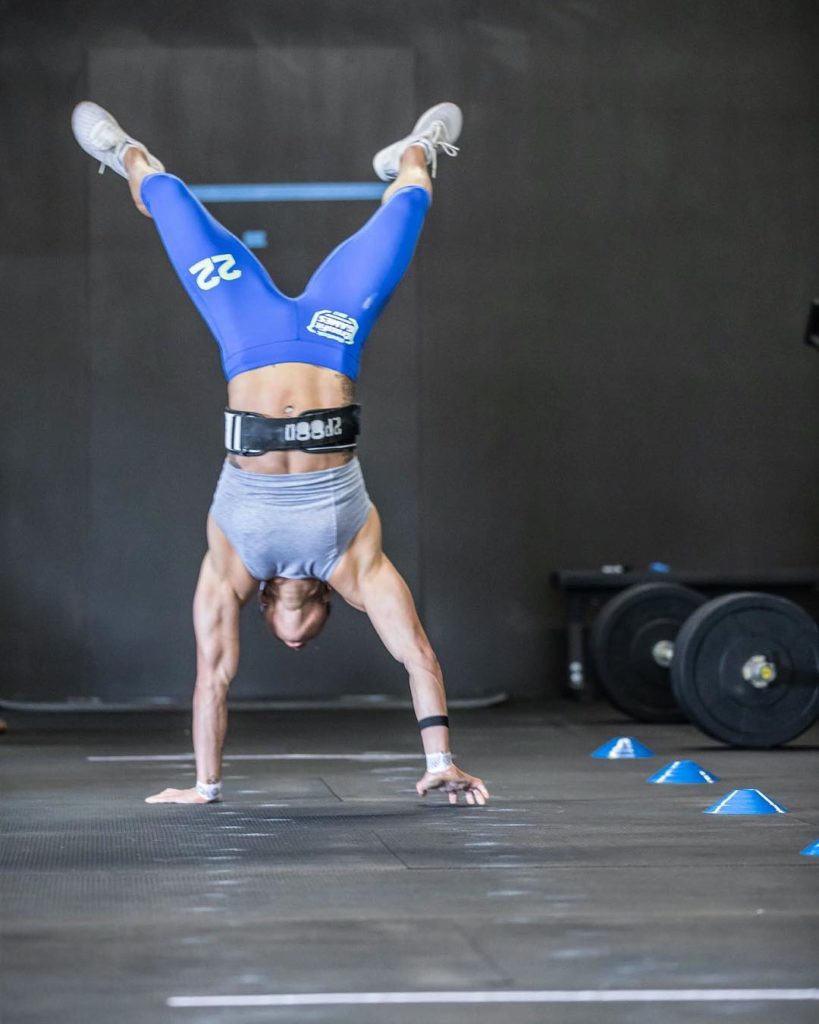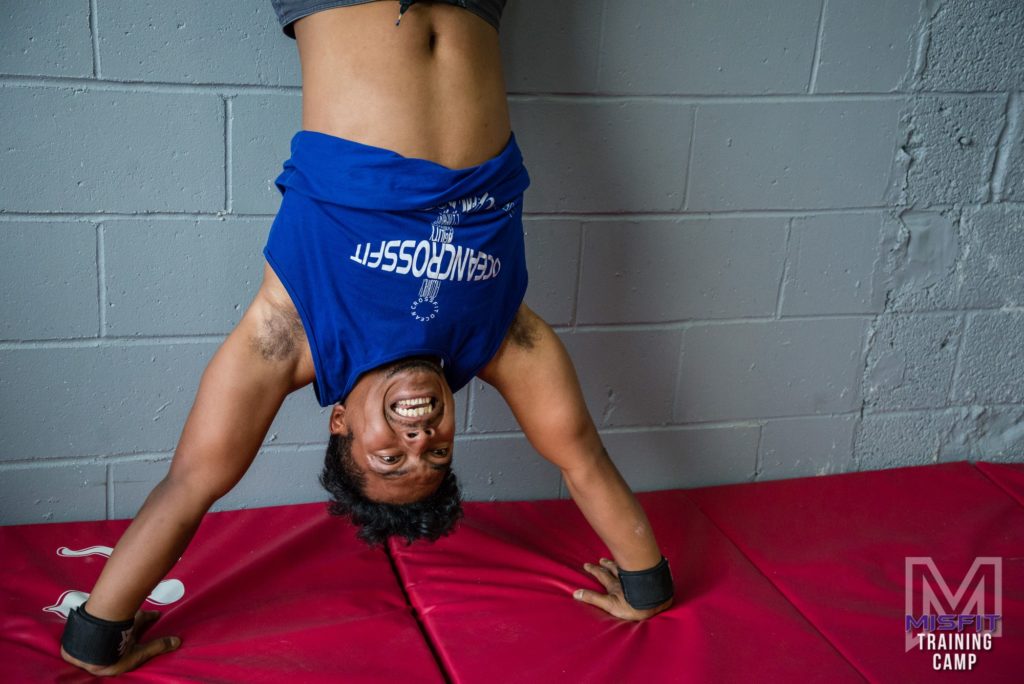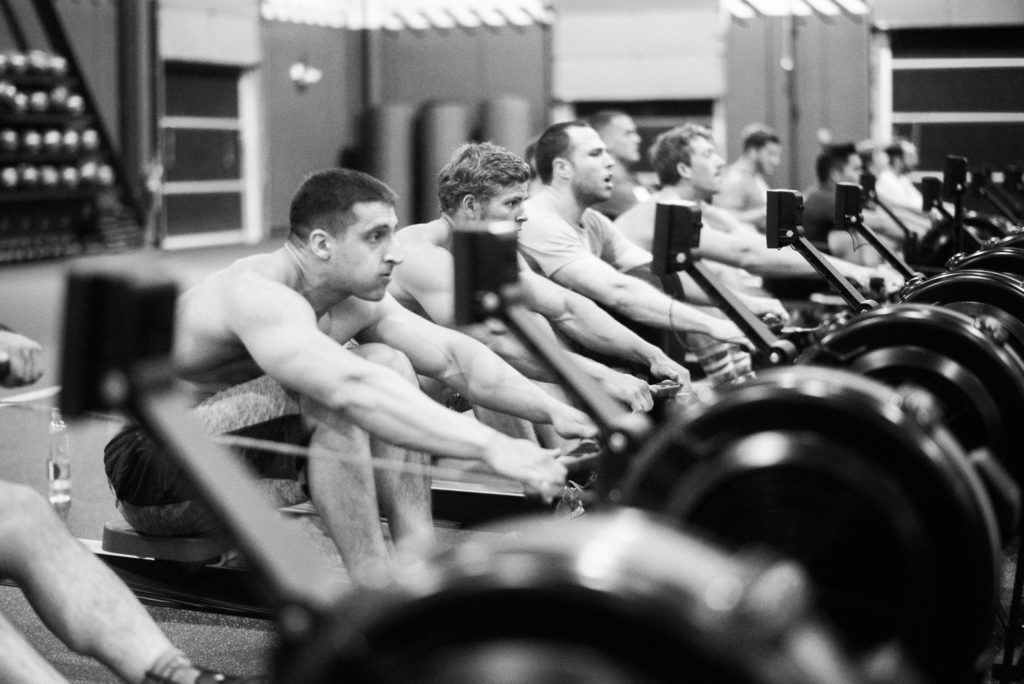The Hatchet Program Is For You

Let’s go on the hypothetical journey of a CrossFit athlete as they become a “competitor”. They sign up for beginner’s class and quickly fall in love with this style of working out. The movements are challenging, the workouts are hard and effective, and the competitive atmosphere is addicting. As they continue to train hard, the desire for a new and challenging program is overwhelming and they stumble upon the Misfit Athletics competitor Blog. It’s immediately apparent that the training is harder, the time commitment is greater, the weights are heavier, the skills are more complex, and the workouts are absolutely kicking their ass. Hour-long training sessions are now three hours and they quickly realize real life isn’t going to be so flexible, so they make one of the most common mistakes we see with competitors: they cram more work in less time. After a week or two they can’t give the same effort as when there were only one or two training pieces per day, but they choose to keep chugging along because they think it’s what is needed to keep up with the fittest. Now they’re in a pickle, so what now? Two words: do less.
The above hypothetical is a very real example of an all too common trend we see among athletes taking on our program. Proper application of a competitor-style program requires giving 100% effort once or twice, not 75% four or five times. We have developed what we believe is the perfect middle-ground for those of you who want more than your affiliate class but may struggle with the volume, haven’t perfected the requisite skills, or don’t have the time required by MFT. Coincidentally, we also think the program actually suits the vast majority of Misfits better than the Blog itself. Enter: The Hatchet Program.
The most important way Hatchet is more appropriate for the masses is the reduction in total training volume. A typical Hatchet training day gives you a daily opportunity to improve your lifting, gymnastics, and metabolic conditioning in three training pieces per day. Three pieces over the course of a 90-minute training session is realistic and provides adequate time to execute a thorough warm-up and perform the training pieces at a high intensity with time to recover between workouts. With fewer pieces, you can focus both your physical and mental energy on the finer details of your movement and improving your specific weaknesses rather than simply going through the motions. Volume isn’t impressive – it just means you have a lot of time on your hands, and it is one of the ways we manage intensity within our programming.
The other primary way Hatchet manages intensity is the modification of individual pieces. We carefully program rep schemes, weights, and skills to provide you with exposure to every possible element of CrossFit without creating insurmountable roadblocks that kill intensity – a regular occurrence when athletes try to perform many of the regular Blog workouts as written. We do this on our end for the masses, but you and your coach are still encouraged to modify even those workouts. To illustrate exactly what we’re talking about, here are a few side-by-side comparisons and how we modify certain elements.
Comparison 1
Blog
For time
150′ Handstand Walk
50 Box Jump Overs 24/20″
25 Bar Muscle Ups
50 Box Jump Overs 24/20″
150′ Handstand Walk
Hatchet
For Time
75′ Handstand Walk
30 Box Jump Overs 24/20″
15 Bar Muscle Ups
30 Box Jump Overs 24/20″
75′ Handstand Walk
In Comparison 1 there is clearly an emphasis on high skill gymnastics. You are looking at long handstand walks and a low-moderate volume of bar muscle-ups (for high caliber athletes) in the middle of the workout. In the Hatchet version, the volume of both skilled gymnastic pieces are reduced but you’re still expected to perform high skill gymnastics. (As a side note, if you finished the deadlift/handstand walk workout in the 2018 Open, you only walked 150’ on your hands – the same volume as the Hatchet workout here.) Many of you might say to to yourself something like “I can do the handstand walks in 25’ increments, move through the box jumps, and then do sets of 5 or so on the muscle-ups” – not a bad plan. However, consider this: our vision is that you easily do 3 sets of a 50’ handstand walk (assuming you don’t have space to do all 150’ in one or two sets), move quickly through the box jumps, and then do the bar muscle ups in 2-3 sets with very little rest. If that doesn’t seem possible without significant rest, the Hatchet version of this workout is probably more appropriate for you in order to get the intended stimulus. Another way of thinking about it, “How long would this workout take someone like Chyna and Cody, or Austin and Caroline?” If their hypothetical time and yours are light-years apart, you know what to do.
Comparison 2
Blog
AMRAP 15 minutes
15/12 Calorie Bike
5 Squat Snatch (185/125 lbs.)
Hatchet
AMRAP 15 minutes
15/12 Calorie Bike
5 Squat Snatch (155/105 lbs.)
In Comparison 2, you might look see the loading on the squat snatch say, “I can snatch that weight, so I can do this as it’s written on the blog”. If we revert back to thinking about the intended stimulus and the target athlete like we did in comparison 1, it should be clearer that we are expecting you to do fast singles on the snatches and hold a respectable pace on the bike – finishing 6+ rounds easily. Realize that just because you can snatch that weight, doesn’t mean you should. Rarely (if ever) do we put weights in a training piece that are meant to slow you down to the point where a metcon turns into a lifting session. If, after an honest assessment, you realize that the goal isn’t to be hitting slow singles after a steady biking effort but instead to be hitting fairly quick singles after biking at a competitive pace, your best move is to do the Hatchet version and obliterate it. Remember, the key here is intensity: “can I keep the pace vigorous enough that I gain something from this piece, or am I just going through the motions and ‘doing the blog?’”
At this point, we may have you telling yourself “okay, okay, I’ll do Hatchet, but how will I know when it’s time to progress to the blog?” The easy answer? Switch to the Blog when you are crushing the Hatchet workouts more often than they are crushing you. Once you start to notice that you are consistently comfortable doing the sets, weights, and high skill movements with a high heart rate, you may be ready to test yourself with the Blog. Ultimately we would love to see you use the Hatchet program as a means to get really, really fit without seeing you waste your time doing training you’re not ready for.
The Hatchet program is ideal for a huge segment of the Misfit community. Athletes with a limited time to train, those who don’t respond well to high volume, can’t yet handle the written reps/weights/skills with intensity, or are just looking to bridge the gap between their affiliate class and a competitor blog are among the many individuals who have benefitted immensely from Hatchet. We can’t do much more to convince you that Hatchet is your program other than to put out this challenge; try a cycle of the Hatchet program, give it hell, and come tell us it didn’t make you fitter in less time. Happy training.
Article by Matt Sherburne






